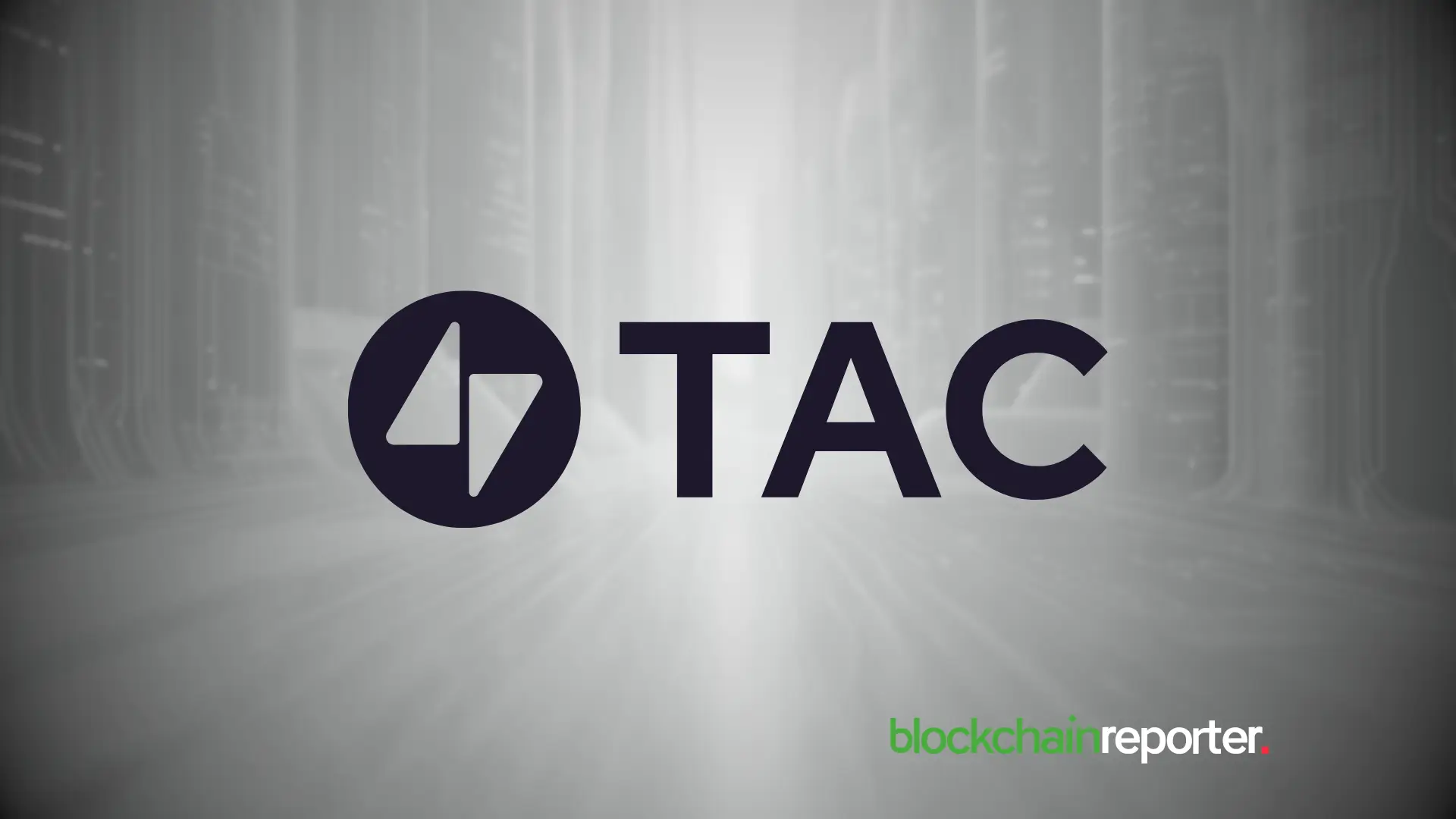Unlocking a Billion Users for EVM Developers: Pavel Altukhov on TAC, the TON Adapter, and the Future of Hybrid dApps



After creating bemo, a liquid‑staking app on TON, Pavel Altukhov spotted a promising opportunity: bringing Ethereum dApps directly into Telegram, a super app now used by over a billion people. TAC is a purpose-built blockchain for EVM dApps to access TON and Telegram Ecosystem’s 1B+ user base. In this interview, Pavel shares how this approach could kickstart DeFi on TON, what’s on the horizon for the project, and why he thinks these “hybrid” apps will finally bring blockchain to everyday users.
Q1. What motivated you to found bemo on TON, and what lessons from that liquid staking protocol carried over into building TAC?
I’ve been an early investor in TON since early 2022, and building on TON was my way of doubling down on that investment thesis, especially the potential of deep integration between TON and Telegram. At the time, launching a liquid staking protocol felt like a natural step: it was a foundational piece missing within the ecosystem, and the logic behind it was straightforward.
Building bemo taught me that the success of any LST hinges on the maturity of DeFi in that ecosystem. Without lending markets, leverage loops, and native yield opportunities, there’s no demand to stake through an LST. In today’s crypto landscape, DeFi mostly means EVM-based apps and Ethereum-native liquidity. These protocols are battle-tested, trusted, and familiar to the broader crypto community.
The DeFi evolutionary pattern can be cloned for every ecosystem, but it takes a lot of time and effort, while its functionality is in demand already today. That’s why with TAC, we are focusing on bringing EVM DeFi and liquidity to the TON ecosystem as we understand the need for it from the perspective of TON investors, TON builders and Telegram ecosystem contributors.
Q2. What gap in the Web3 ecosystem did you identify that led you to co-found TAC?
In 2022, the dApp ecosystem on TON was virtually nonexistent. Liquid staking was one of the essential services on any Proof-of-Stake blockchain. It was clear that building that foundation was the first step.
Q3. How does TAC’s vision of “Hybrid dApps for Telegram” align with your long-term goals for blockchain usability?
Blockchain as a technology is mature enough to deliver real value to consumers globally. The challenge now is distribution. The first step is accessibility, and that’s already happening through TON, Telegram, and tools like the @wallet Mini App, which puts crypto in the pockets of a billion people. The second step is functionality and that’s where TAC comes in. Technically it is achieved by making every TAC deployed application “Hybrid” or existing on both EVM and TON, so TON and Telegram users could interact with these apps in a most friendly way possible. When these two core pillars are in place the massive consumer distribution of the benefits of the blockchain technology is possible. That’s the vision – making blockchain benefits available not just to early adopters but to everyone. Thanks to Telegram the DeFi value can be brought to you right within your favourite messenger.
Q4. You’ve spoken about tapping into Telegram’s 950 million users, what makes this “1 billion user opportunity” unique for Ethereum-based projects?
This isn’t about Ethereum. It’s about a fundamental shift in how crypto builders reach users. TON in Telegram marked the first time when the technology was integrated into a massive community. That’s the contrast to the typical way of building community, for example, how Ethereum evolved where the tech came first and the community had to be built around it. Now, your app is in front of a billion people from day one.
For a builder it’s no longer “How do I onboard users into crypto?” it’s “What value am I delivering, and how?” You don’t need to educate, incentivize, or convert anyone. You’re already in their chat app. That kind of native distribution is unprecedented. Having access to the distribution is unique, being at the pivotal point for the whole industry and shaping it is an even bigger thing for builders, it’s epic!
Q5. Can you explain how the TON-Adapter works under the hood to allow Ethereum dApps to run on TAC without code rewrites?
When Hybrid dapp action is triggered, the request first lands in a special TAC contract on the TON side. That contract records who sent it, which TAC dapp is engaged, what function to run, and how many tokens should be moved.
Independent TAC operators check that everything adds up and lock the user’s tokens on TON. They then bundle many of these checked requests into one cryptographic “package” everyone can verify. Once most operators agree the package is valid, one of them carries it over to TAC’s EVM chain. On the TAC side, the package is opened. If the proof matches what the operators agreed on, TAC releases or mints the mirrored tokens and calls the chosen Solidity function exactly as if it were running on Ethereum.
Should something go wrong, the system automatically rolls the whole thing back and unlocks the user’s original tokens on TON. Any operator who tries to cheat loses their security deposit.
As the cross‑chain interoperability is handled by TAC’s TON Adapter, all developers need to do is to deploy the same Solidity code on TAC EVM Layer.
Users, meanwhile, enjoy one‑tap access straight inside Telegram without juggling extra wallets or bridging dApps.
Q6. What were the biggest engineering challenges in integrating EVM compatibility into a Layer 1 designed for Telegram?
EVM compatibility itself isn’t the hard part. We’re using a battle-tested solution based on the Cosmos SDK which handles that reliably. The real challenge lies in the TON Adapter part of TAC. Integrating with TON requires a deep understanding of its architecture and strong TVM expertise. That’s where our team’s background as native TON builders plays an important role.
Q7. TAC recently onboarded Curve Finance onto its testnet—what did that integration teach your team, and how will it influence future dApp deployments?
Deploying Curve is a major validation for every ecosystem first of all. The proxy smart contracts and TVM side of the code required for the integration is open sourced and is helping builders reduce the time to market of their apps being deployed or built.
Q8. How do you balance maintaining Ethereum’s developer experience with leveraging TON’s scalability and messaging capabilities?
This is achieved through a no change to the code deployment on TAC EVM Layer and the toolset simplifying the additional proxy smart contracts being built, which, in turn, open up the TON interoperability.
Q9. How does TAC attract and onboard liquidity providers to ensure robust markets for dApps on TON?
We’re running The Summoning, our liquidity bootstrapping campaign. It gives liquidity providers the opportunity to start earning TAC incentives on the pre-mainnet stage while helping us build the liquidity mass needed to make dApps functional from early days on mainnet at the same time.
Q10. Beyond DeFi, what consumer-facing use cases (e.g., gaming, social tokens, NFTs) are you most excited to see emerge on TAC?
DeFi is just Chapter One. Any use case that already has traction on EVM, whether it’s digital identity, on-chain reputation, or social apps, can now reach Telegram’s massive in-app user base. But in the end consumers define the winner, we let builders take a shot at it.
Q11. Can you highlight any standout Hybrid dApps in development that showcase TAC’s unique capabilities?
Several top-tier DeFi projects such as Curve, Morpho, Euler, Zerolend are being deployed on TAC testnet and will be available on Mainnet at launch. These dApps represent core primitives like DEXs, lending and yield aggregation.
Q12. How have Telegram and its community influencers reacted to TAC so far?
We’ve only just begun spreading the word about TAC, but we’re already seeing strong engagement and growing mindshare on social platforms. We focus on supporting community members who actively contribute. That core group, which we call the TAC Force, is a community we’re intentionally building and view as fundamental to the project’s long-term success.
Q13. TAC’s funding round was led by Hack VC and Symbolic Capital, with Polygon co-founder Sandeep among angel backers, how are these partners contributing beyond capital?
We were successful in partnering up with the best VCs and angels in the space in a sense that from the start, we chose partners based on the value they could bring beyond funding. Sandeep’s understanding of the infrastructure, tech, and the industry in general have been incredibly helpful. Michael Egorov’s contribution on the application-level is invaluable. Among VCs, our leads – Hack and Symbolic, as well as Paper Ventures, and Primitive have all played active roles in accelerating our progress.
Q14. What key features or upgrades are on TAC’s development roadmap for the next 6 to 18 months?
The mainnet launch is the biggest milestone on the horizon. In the second half of the year, we’ll focus on performance optimization and improving transaction speeds, the TON Adapter consensus, its decentralization and implementation of TON restaking for its security.
Q15. Looking back, what’s one decision in TAC’s journey you’re most proud of—and one you’d approach differently today?
I’m most proud of partnering with my co-founder Marco Monaco. His initial validation of TAC thesis, deep experience in EVM ecosystem building, and unwavering commitment have been critical to our progress. If I could change one thing, I’d simply have started earlier.

TaskOn and Boinkers Join Forces to Fuel Web3 Adoption Through Gaming
TaskOn and Boinkers collaboration focuses on unlocking new avenues in interactive gaming, reward-led...

Whale Racks Up $13.41 Million with 3x Leverage Long On Hyperliquid (HYPE)
The whale leveraged its long position in HYPE amid the current bull market. Using 3x leverage, the i...

Fidelity’s $48.7M Bitcoin Buy Fuels Institutional Wave as BTC Holds Above $111K
Fidelity buys 444.30 BTC as Bitcoin holds above $110K as institutions fuel rally with record ETF inf...

